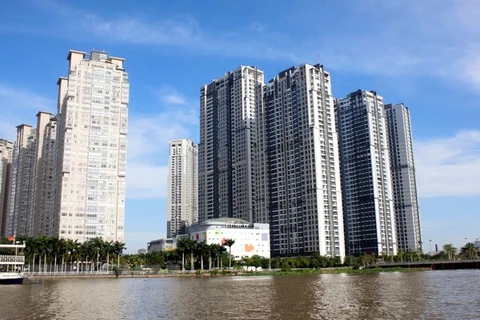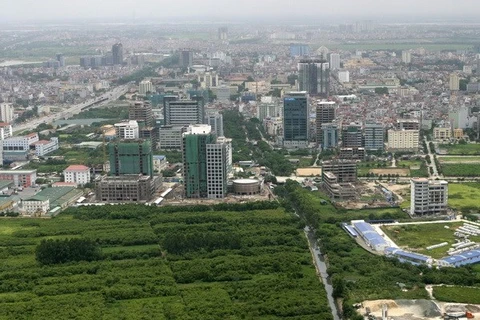Hanoi (VNA) - The five years of implementation of the Land Law 2013 have exposed various obstacles and problems, with the most serious being the prices as those fixed by the State are always far lower than those in the market.
Five years after the Land Law 2013 came into force, the management of land has shown progress, but the implementation has also exposed various obstacles, with the most serious being the prices as those fixed by the State are always far lower than those in the market.
According to Associate Professor, Doctor Nguyen Van Xa, former head of the Department on Public Asset Management, the State-fixed land prices come that way as many localities still maintain the maximum adjustment level at only 1.5 times the land prices. Meanwhile, the land price tables of many localities are too low compared to the prices in the market, with the price of agricultural land being the lowest.
Xa further said that currently, a number of localities in the Red River Delta are still keeping the highest price of the land for the cultivation of fruit trees at 60,000 VND (about 2.6 USD) per square metre. The most popular price of agricultural land in the north and central parts of the country is capped at 200,000 VND per square metre
Particularly, there are localities in which the top agricultural land price is only 20,000 VND per square metre. In the Mekong Delta, the price of land under annual crops is fixed at 210,000 VND per square metre or even lower, and that under perennial trees, capped at 250,000 VND per square metre.
[Vietnam needs to complete land market: experts]
On the basis of the land prices fixed at those levels, Mr. Xa held that the regulations on this issue has not sufficiently manifested the economic characteristics of land, or been suitable to the reality of the land market as in fact.
The gap between the land prices fixed by the State and those in the market has created a “tight shirt” which has led to prolonged complaints when the State decides to take back the land. As a result, there are no financial resources to recreate “irreplaceable production material in agriculture” along with a number of other factor, and this leads to prolonged complaints.
Besides, with the maximum land prices being only 30 percent of the real ones, farmers find it hard to ace credit capital, especially those in the north and the central regions as each of the households is allotted with very small lots of land. In many cases, they cannot get sufficient capital as investment for agricultural development when they mortgage their land, some even cannot borrow any money.
A mushrooming phenomenon is that many firms take advantage of the land they are renting from the State to change the land use purposes into dwelling for property projects which lead to huge personal profits.
Moreover, according to Xa, this problem has caused heavy impact on the bidding activities, especially of BT projects, as the majority of those of this form offer compensation according to the adjustment ratio for investors without organising biddings as prescribed in the Land Law 2003 and the Land Law 2013.
Worse still, many BT projects hand over or lease land lots without bidding. Investors even divide their land lots into smaller ones to meet the requirement on pricing according to the adjustment ratio of land prices, thus enjoying lower land use or land rental fees.
Sharing the viewpoint, Associate Professor Doctor Ngo Tri Long, former director of the Pricing Management Institute, also affirmed that the land prices fixed by the State are only 20 to 30 percent of those in the market. Similarly, the prices of land in provinces are also only 30 to 60 percent of those on the local markets. All this causes irrationalities when land is taken back.
As a result, the site clearance comes to constant bottlenecks as compensations are too low.
To create breakthrough in this problem, experts hold that there should be a legal document regulating the financial mechanism that uses land bank to create capital to pay investors. In principle, the land prices must be fixed at levels suitable to those in the market. Fines must be imposed on organisations and individuals who take illegal advantage of this, and biddings must also be held./.
























